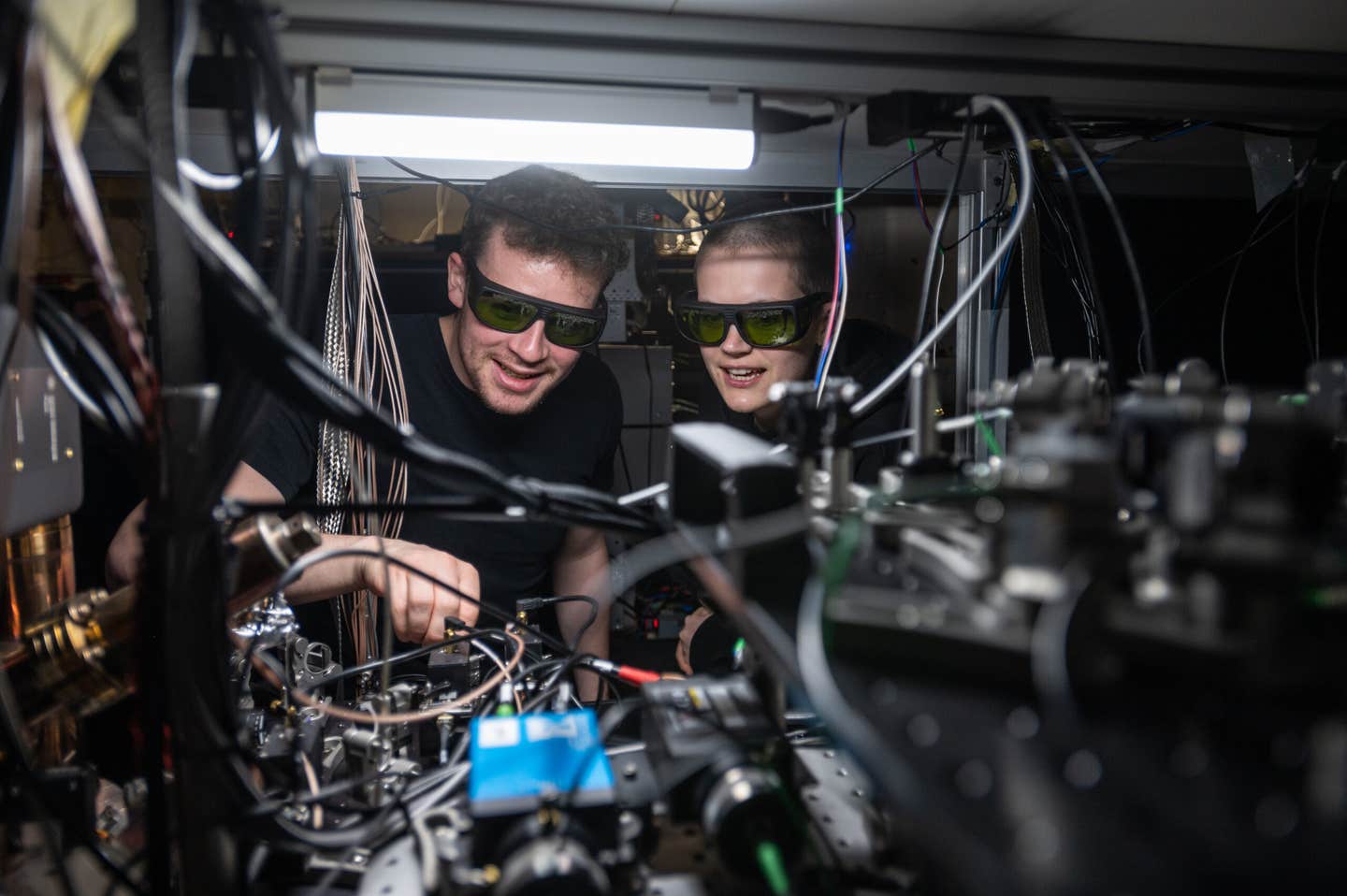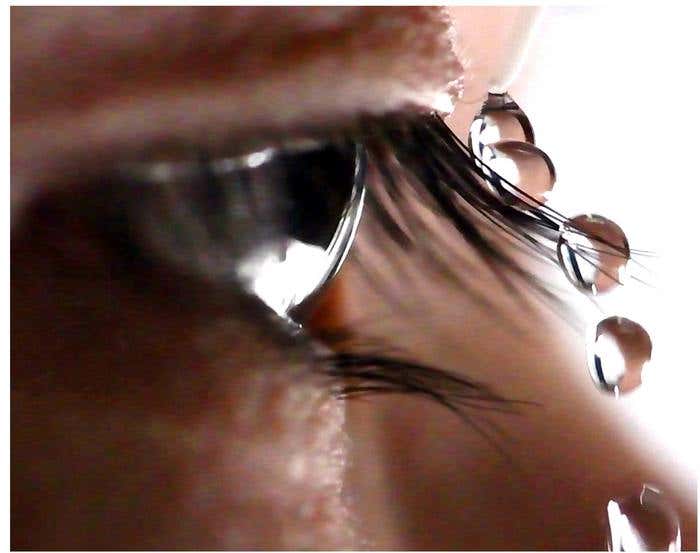First-ever distributed quantum algorithm is a breakthrough for quantum supercomputers
Scientists link two quantum processors using photonic networks, marking a breakthrough in distributed quantum computing for large-scale applications.

Dougal Main and Beth Nichol working on the distributed quantum computer.(CREDIT: John Cairns)
Scientists have taken a major step toward building large-scale quantum computers by successfully linking two separate quantum processors into a single, fully connected system.
This breakthrough in distributed quantum computing offers a promising way to overcome the challenges of scaling up quantum computers and has the potential to revolutionize fields such as cryptography, drug discovery, and artificial intelligence.
A New Approach to Quantum Computing
Quantum computers rely on qubits, which can exist in multiple states simultaneously due to quantum superposition. This ability allows them to process complex problems much faster than classical computers. However, increasing the number of qubits within a single system while maintaining control and connectivity is an immense challenge.
Instead of cramming more qubits into a single machine, researchers at Oxford University Physics have demonstrated a distributed approach.
They connected two separate quantum modules using photonic links—fiber-optic cables that transmit quantum information using light instead of electrical signals. This method enables qubits in different modules to interact as if they were in the same processor.
The study 'Distributed Quantum Computing across an Optical Network Link,’ is published in the journal Nature.
Dougal Main, a lead researcher on the project, explains: "Previous demonstrations of quantum teleportation have focused on transferring quantum states between physically separated systems. In our study, we use quantum teleportation to create interactions between these distant systems. By carefully tailoring these interactions, we can perform logical quantum gates—the fundamental operations of quantum computing—between qubits housed in separate quantum computers."
The Role of Quantum Teleportation
The key to this distributed system is quantum teleportation, a process that allows information to be transferred between qubits without direct transmission. This is achieved through quantum entanglement, where two particles remain correlated even when separated by long distances.
When one qubit in a module is entangled with another in a separate module, performing an operation on one immediately affects the other. This enables the execution of quantum gate teleportation (QGT), a method that implements logical quantum operations across a network. Unlike direct data transfer, which risks information loss due to noise or interference, teleportation ensures that the quantum state remains intact.
Professor David Lucas, lead scientist for the UK Quantum Computing and Simulation Hub, says: "Our experiment demonstrates that network-distributed quantum information processing is feasible with current technology. Scaling up quantum computers remains a formidable technical challenge that will likely require new physics insights as well as intensive engineering effort over the coming years."
Related Stories
Breaking the Scalability Barrier
For quantum computers to reach their full potential, they must handle millions of qubits. Packing all those qubits into a single machine would create enormous technical challenges, from maintaining quantum coherence to managing complex interconnections. The distributed approach sidesteps these issues by linking smaller modules together.
In the Oxford experiment, the two quantum modules were separated by about two meters and contained dedicated network and circuit qubits. By generating entanglement between network qubits, researchers teleported a controlled-Z (CZ) gate—a key quantum logic operation—between circuit qubits in separate modules with 86% fidelity.
They then successfully executed Grover’s search algorithm, a quantum algorithm designed to quickly find solutions within large datasets. The method achieved a 71% success rate, demonstrating the feasibility of distributed quantum computing.
Quantum physicist Dougal Main describes the approach as similar to how traditional supercomputers function: "These are made up of smaller computers linked together to achieve capabilities that are greater than those of each separate unit.
This strategy circumvents many of the engineering obstacles associated with packing ever larger numbers of qubits into a single device, while preserving the delicate quantum properties needed for accurate and robust computations."
Toward a Quantum Internet
The success of this experiment suggests that quantum processors could eventually be networked across vast distances, forming a "quantum internet." This could enable ultra-secure communication, large-scale computational collaboration, and advances in quantum sensing.
Unlike traditional networks, where data is transmitted through classical signals, a quantum internet would rely on entanglement to instantly share information across different nodes. This could revolutionize industries requiring high levels of security, such as finance and national defense.
Additionally, the modular approach allows for system upgrades without disrupting the overall network. "By interconnecting the modules using photonic links, the system gains valuable flexibility, allowing modules to be upgraded or swapped out without disrupting the entire architecture," says Main.
With ongoing advancements in quantum computing and networking, this breakthrough provides a crucial foundation for future scalable quantum systems. While many engineering challenges remain, the success of distributed quantum computing brings researchers one step closer to harnessing the full power of quantum mechanics.
Note: Materials provided above by The Brighter Side of News. Content may be edited for style and length.
Like these kind of feel good stories? Get The Brighter Side of News' newsletter.
Joshua Shavit
Science & Technology Writer | AI and Robotics Reporter
Joshua Shavit is a Los Angeles-based science and technology writer with a passion for exploring the breakthroughs shaping the future. As a contributor to The Brighter Side of News, he focuses on positive and transformative advancements in AI, technology, physics, engineering, robotics and space science. Joshua is currently working towards a Bachelor of Science in Business Administration at the University of California, Berkeley. He combines his academic background with a talent for storytelling, making complex scientific discoveries engaging and accessible. His work highlights the innovators behind the ideas, bringing readers closer to the people driving progress.



